For nearly five decades, the Bureau of Land Management (BLM) has been rounding up wild horses and burros with helicopters, stampeding them into traps, and stockpiling them in holding facilities.
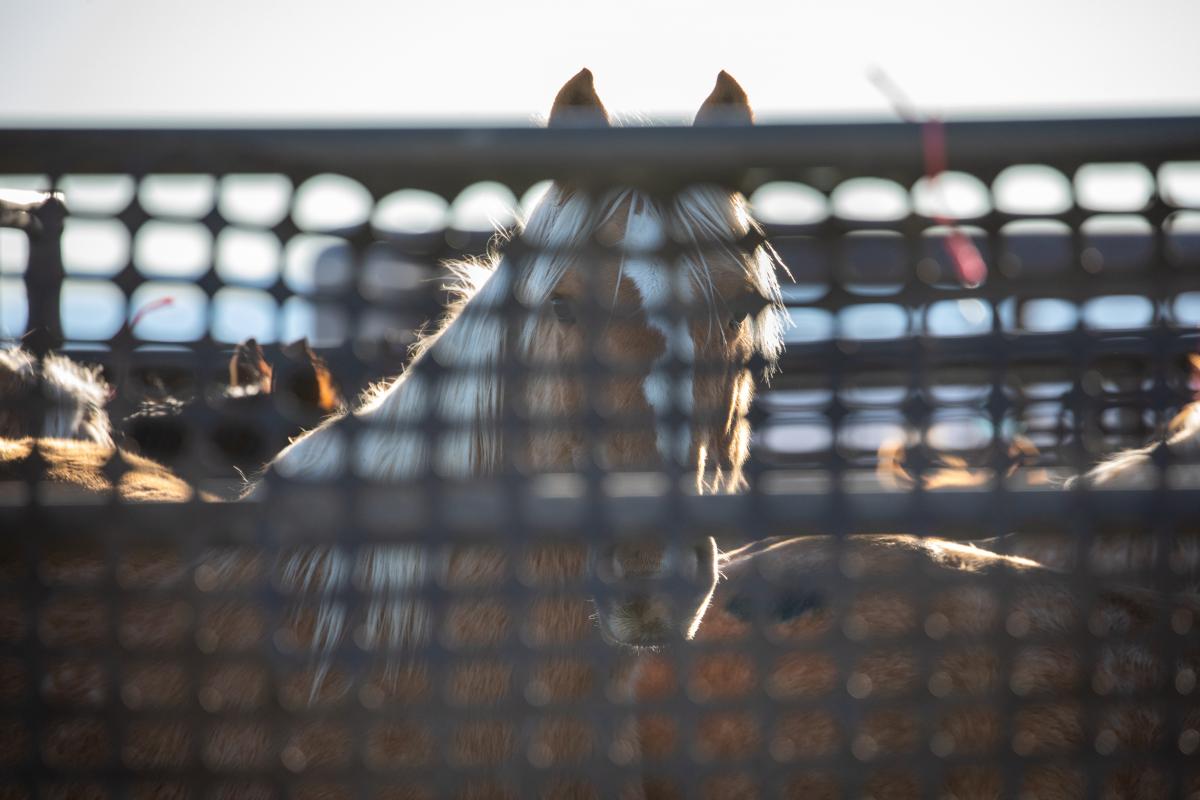
The BLM’s management program is not much different from the brutal mustanging practices that Congress intended to stop by passing the Wild Free-Roaming Horses and Burros Act of 1971. And it has persisted despite many critical reports over the years from the National Academy of Sciences, General Accountability Office, and the Office of Inspector General labeling the program as costly, inefficient, and ineffective in managing the nation’s wild herds.
As the Program’s annual budget has skyrocketed (from $19.8 million in 2001 to $116 million in 2021), the agency has publicly promised reform. But it has continued to pump millions into an endless cycle of roundups and removals while spending less than one percent of its budget on the scientifically recommended and more humane option: fertility control.
Why? Pressure from the livestock industry, which reaps big profits from every horse born on the range and rounded up, could be a reason considering that preventing births on the range through birth control would stem this flow of profits. It’s a federal gravy train that’s putting millions in the pockets of cattlemen to round up these federally protected animals and store them by the thousands in feedlots. Based on publicly available information, livestock operators have earned the following:
- $53.2 million for helicopter roundup and bait-trapping operations since 2006.
- $87.0 million for short-term holding corrals since 2010.
- $333 million for long-term holding pastures since 2004.
For the last 10 years, cattlemen have received 89% of contract funds ($361,089,585 out of $405,734,931) filed under “Wildhorse/Burro Control Services.”
So, who’s been profiting from this broken system? Below are just some of the players.
Roundup Contractors
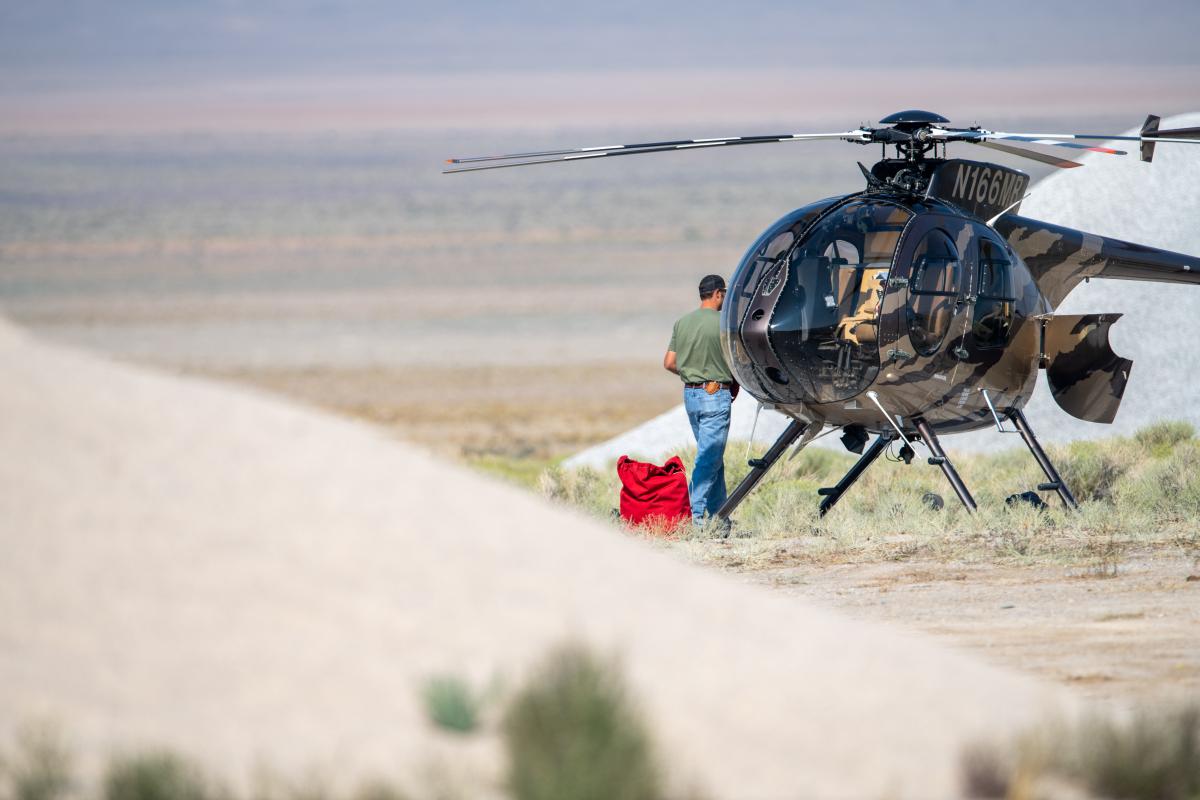 Removing wild horses and burros for the federal government is a lucrative business. While helicopter roundups average between $800–$1,000 per horse/burro, bait trapping is less expensive—about half the cost per animal. No matter the method, however, the business of taking wild horses and burros from their federally designated habitat on public lands has turned a handsome profit for some Utah, Nevada, Arizona, and Oregon cattlemen.
Removing wild horses and burros for the federal government is a lucrative business. While helicopter roundups average between $800–$1,000 per horse/burro, bait trapping is less expensive—about half the cost per animal. No matter the method, however, the business of taking wild horses and burros from their federally designated habitat on public lands has turned a handsome profit for some Utah, Nevada, Arizona, and Oregon cattlemen.
Here’s the lineup of past and current wranglers:
- Cattoor Livestock Roundup Company of Nephi, UT, is the BLM and U.S. Forest Service’s (USFS) helicopter roundup contractor of choice. In 1975, it began working for the BLM, and by all estimates has captured around 200,000 horses for the agency since then. Since 2006, Cattoor has made $26,196,838 from 153 contracts with the BLM and $2,410,617 from 5 contracts with the USFS, including contracts that extend through 2025. In that same time, Cattoor has also earned an additional $2,207,824 in other contracts with BLM, USFS, and the U.S. Fish and Wildlife Service.
- Sun J Livestock of Vernal, UT, was awarded $9,993,939 from 34 contracts with the BLM and $574,342 from 1 contract with the USFS since 2010, including contracts that extend through 2025.
- Shayne F. Sampson of Meadow, UT, a former Cattoor employee, was awarded $4,927,430 from 37 contracts with the BLM and $39,529 from 1 contract with the USFS since 2012, including contracts that extend through 2025.
- C D Warner Livestock LLC of Spanish Fork, UT, was awarded $3,762,215 from 24 contracts with the BLM and $72,683 from 3 contracts with the USFS since 2012, including contracts that extend through 2025.
- Uhalde Livestock LLC of Ely, NV, was awarded $846,059 from 7 contracts with the BLM between 2017 and 2021.
- Rocking A Livestock of Lehi, UT, was awarded $456,619 from 3 contracts with the BLM since 2020, including contracts that extend through 2025.
- KG Livestock of Vernal, UT, was awarded $3,562,983 from 31 contracts with the BLM between 2007 and 2010.
- Desert Hill Construction of Morristown, AZ, was awarded $238,889 from 9 contracts with the BLM and $57,212 from 3 contracts with the USFS between 2009 and 2016.
- Mike O’Sullivan of Adel, OR, was awarded $59,710 from 3 contracts with the BLM between 2006 and 2016.
TOTAL: $53,199,065 for helicopter and bait-trapping operations since 2006, including contracts that extend through 2025.
Short-Term Holding Contractors
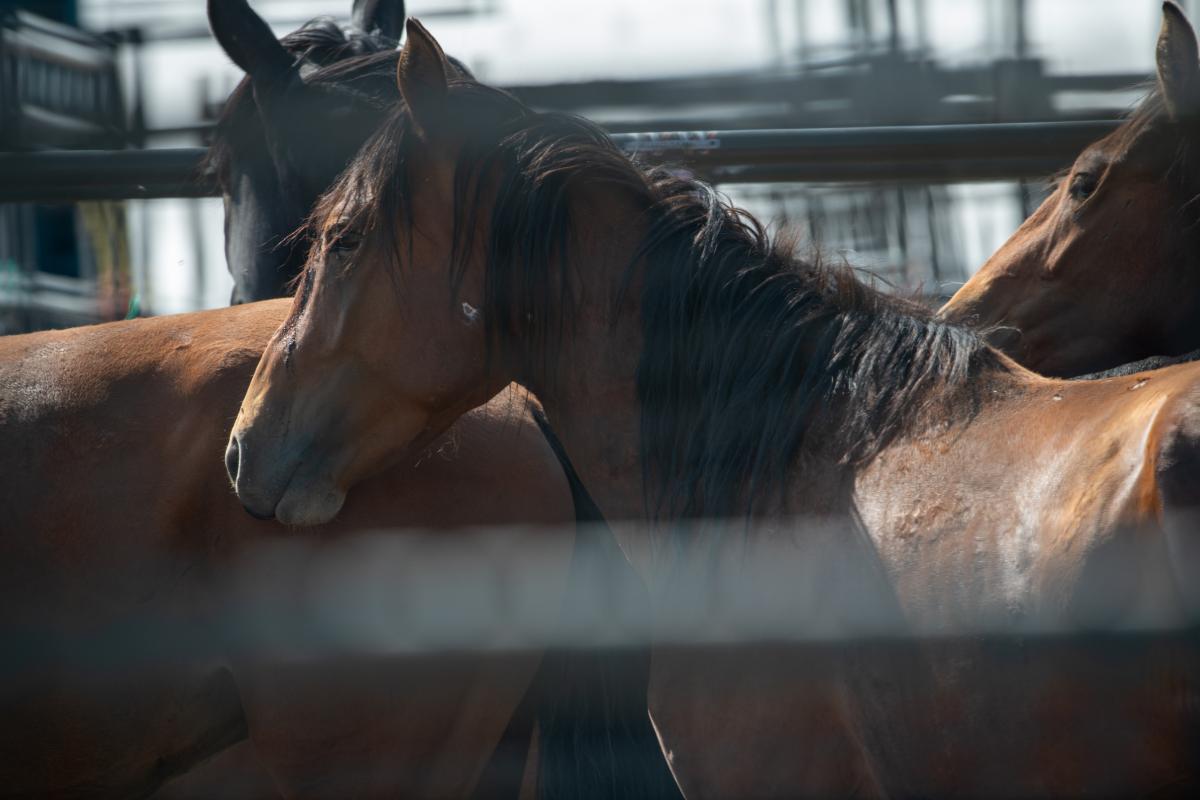 After the roundups, BLM trucks wild horses and burros by the semi-load to 28 short-term holding facilities (i.e., corrals), four of which are privately owned corrals. Of the 18,891 horses and burros in short-term corrals as of November 2021, 5,571 are stored in these private facilities. (Note: USFS operates two short-term holding facilities, neither of which are privately owned; horses beyond its capacity to hold are sent to BLM corrals.)
After the roundups, BLM trucks wild horses and burros by the semi-load to 28 short-term holding facilities (i.e., corrals), four of which are privately owned corrals. Of the 18,891 horses and burros in short-term corrals as of November 2021, 5,571 are stored in these private facilities. (Note: USFS operates two short-term holding facilities, neither of which are privately owned; horses beyond its capacity to hold are sent to BLM corrals.)
Conditions at these short-term holding facilities are notoriously harsh: crowded feedlot pens that offer little to no shelter from extreme summer heat or winter winds, snow, and cold, and multiple lapses in biosecurity protocols.
Here’s a summary of facilities that are making money on these contracts:
- Indian Lakes Holding Facility, in Fallon, NV, operated by Broken Arrow Horse & Cattle Company (2,800 horse capacity), was awarded $39,166,063 from 11 contracts with the BLM since 2010.
- Indian Lakes Holding Facility, in Fallon, NV, operated by Gary Snow Livestock & Grain Inc. (2,800 horse capacity), was awarded $10,176,961 from 1 contract with the BLM between 2005 and 2010.
- Axtell Off-Range Corrals in Axtell, Utah, operated by Kerry M. Despain (4,250 horse and burro capacity), was awarded $17,482,062 from 13 contracts with the BLM since 2012.
- Simplot Livestock, Bruneau Off-Range Corrals, in Bruneau ID, operated by J.R. Simplot (2,800 horse and burro capacity), was awarded $16,410,175 from 7 contracts with the BLM since 2015.
- Sutherland Off-Range Corral in Sutherland, UT, operated by G&R Livestock Inc. (1,000 horse capacity), was awarded $3,770,200 from 3 contracts with the BLM since 2020.
TOTAL: $87,005,461 for private short-term holding since 2005.
Despite these exorbitant costs, the BLM is plowing ahead to secure even more private corrals. In 2020, it sought bids for proposals in the states of Idaho, Nevada, and Utah. Recently, the agency finalized its Environmental Assessment on a 100-acre to 4,000 wild horses and burros in Winnemucca, Nevada where residents are expressing multiple concerns about negative environmental impacts, such as odor, dust, and water quality. If it acquires the requisite state permits, this new facility will reap its operator, JS Livestock, an estimated $20,000 per day or $7.3 million annually to warehouse wild horses in feedlot pens.
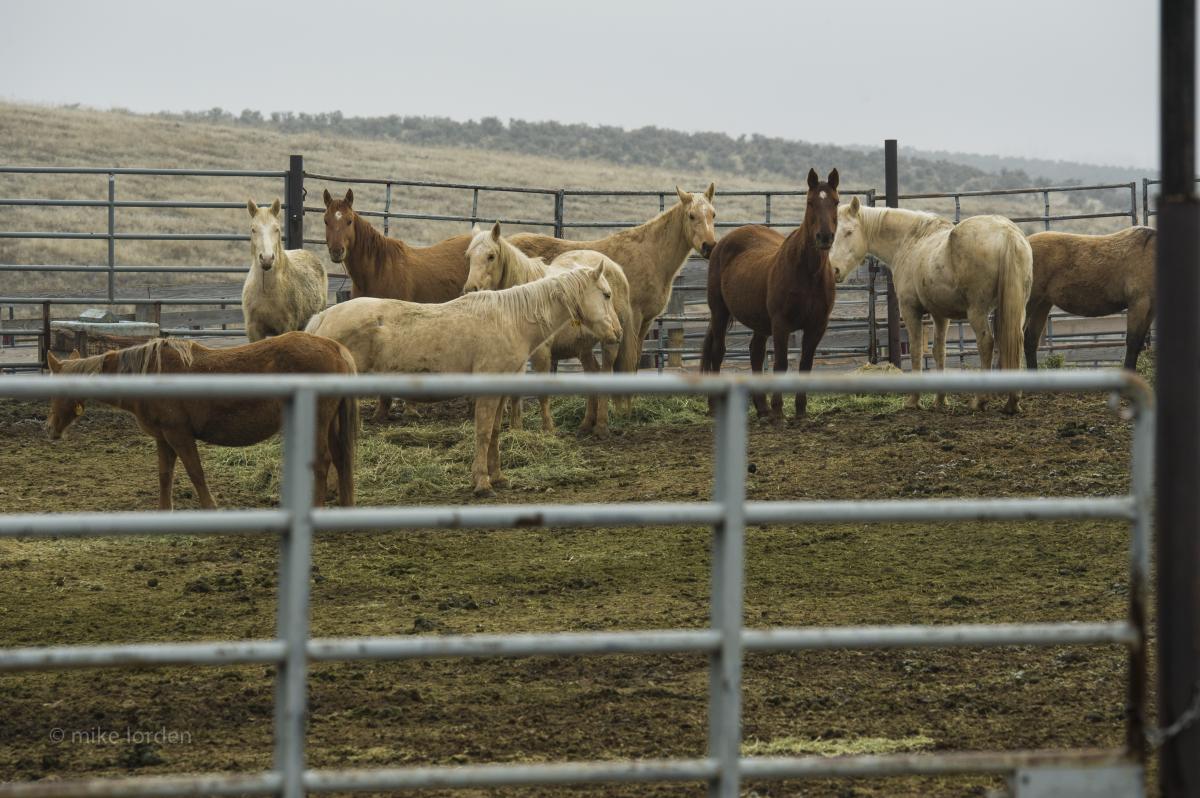
Oregon holding facility | Mike Lorden
Although these short-term facilities are intended to hold horses and burros for a few years at most, that’s not the reality. While a few are eventually adopted, sold for $25 with limitations, or transferred to private long-term pastures, others are long-term residents—foaling, languishing, and dying in overcrowded pens, deprived of the freedom they once knew and deserve.
A recent FOIA request shows that as of January 1, 2020, 17 burros at Axtell have been there since 2012 and many others since 2013 and 2014. Also, past FOIA records of horses at the Indian Lakes, Bruneau, and Axtell corrals reveal that horses are staying in these feedlot pens for years. At the Bruneau Off-Range Corrals in 2017, 68% of the 2,330 horses had been there since 2012 or earlier.
Long-Term Holding Contractors
Besides short-term corrals, the BLM ships horses to 42 long-term holding facilities (LTH; i.e., pastures) that are privately owned and closed to the public (USFS does not operate any pastures). Only four are privately owned and open to the public for visitation and adoption.
The top five contractors for long-term holding are—
- Drummond Land & Cattle Co. ($33,871,726; 19 contracts);
- 20 West LLC ($25,068,980; 11 contracts);
- Grand Eagle Summit, LLC ($22,983,343; 14 contracts);
- Tadpole Cattle Co Inc. ($22,175,928; 7 contracts); and
- Hughes Cattle Company ($18,221,663; 13 contracts).
However, the same person—Robert S. Hughes II—owns both Tadpole Cattle Co Inc. and Hughes Cattle Company, thus collectively earning $39,964,983 from 19 contracts.
TOTAL: $332,537,529 since 2004 for 45 contractors (359 contracts). (Data available upon request)
As of November 2021, there are 39,172 horses in long-term pastures. Although maintaining horses on these pastures is less expensive than in corrals—approximately $2.00 per horse per day vs. approximately $5.00 per horse per day—the costs are still formidable and growing. The below table shows the BLM’s annual expenditures for long-term holding facilities from 2017–2021, which consumes about one-third of the Program’s expenditures.

In just the last two years, the BLM awarded contracts for several new long-term pastures that would accommodate between 300 and 1,240 horses each, adding to its vast network of holding facilities for wild horses and burros captured and removed from the range. Given that the BLM plans to remove 20,000 wild horses and burros each year for at least the next decade, the population in government holding facilities and the associated expenses are expected to balloon considerably—in particular, annual LTH costs are anticipated to hit $94M in just four short years.
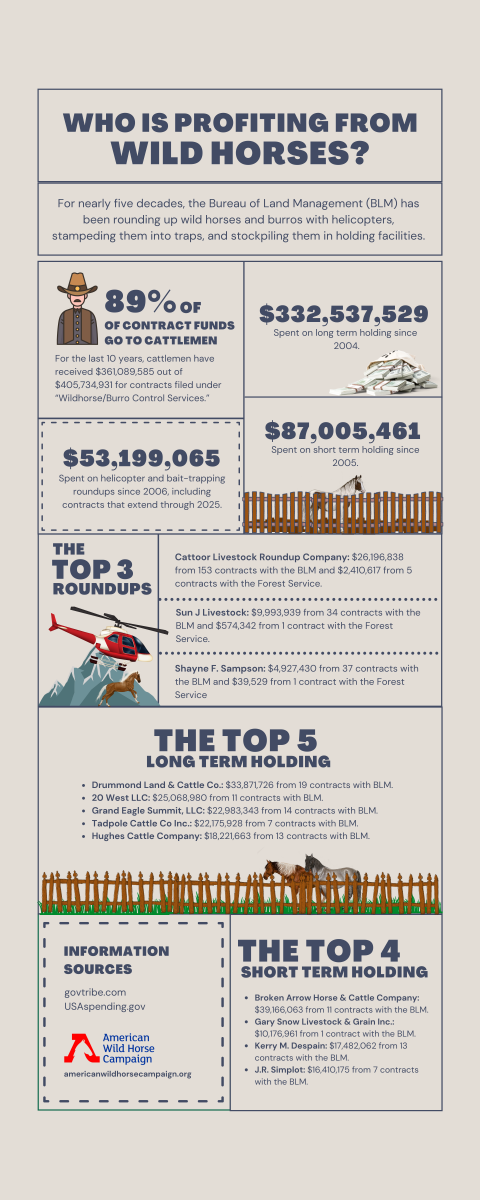
Subsidized Grazing
 Every year, America’s wild horses are being removed from public lands by the thousands to maximize land available for private ranchers to graze their livestock for almost next to nothing.
Every year, America’s wild horses are being removed from public lands by the thousands to maximize land available for private ranchers to graze their livestock for almost next to nothing.
As of January 19, 2021, the BLM administers 17,945 grazing permits and leases for livestock—mostly cattle and sheep—on more than 21,000 allotments accounting for 12,081,106 AUMs (1 AUM, or “Animal Unit Month,” is the amount of forage necessary to feed one cow-calf pair for one month).
The going rate for grazing on private land in the West is about $23.00 per AUM. But for the small number of ranchers who hold permits to graze livestock on public lands—some of which are owned by wealthy corporations such as J.R Simplot—the grazing fees are a fraction of that cost. This year, the federal grazing fee is $1.35 per AUM. That’s a steep discount, thanks to the taxpayer subsidies that prop up this federal entitlement program that loses millions of dollars each year.
For example, in FY2017, the BLM spent $79.0 million on the Grazing Program, but only brought in $18.3 million in grazing fees, of which a maximum of $6.9 million would have returned to the U.S. Treasury—this amounts to a loss of at least $72.1 million in that year alone!
Thus, the BLM wild horse roundup program is benefitting the livestock industry on all sides—from the ranchers who graze more subsidized cattle on the public lands when wild horses are removed, to the contractors who make millions rounding up wild horses and burros, to the cattle companies that store horses in feedlot holding pens or turn them out on pastures for millions annually.
An Opportunity for Seismic Change
It’s time to stop the gravy train to the livestock industry interests that profit from the endless cycle of wild horse and burro removals.
AWHC has been working with our partners on Capitol Hill to push for vital legislation to protect America’s wild horses and burros and to urge the BLM to direct funding away from roundups and toward a more humane, sustainable management strategy. The Interior appropriations bills released by both the House and Senate Appropriations Committees dedicated $11 million of BLM’s FY2022 Wild Horse and Burro Program budget to reversible fertility control vaccines.
But there’s more. We also want other much-needed reforms such as an investigation into the Adoption Incentive Program that is funneling wild horses and burros to slaughter, a ban to protect wild horses and burros from slaughter, and a call to the BLM to evaluate other on-range management options, such as relocating wild horses and burros to other Herd Management Areas to avoid removals and keep these animals on the range where they belong.
Take Action
Please contact your federal legislators now and urge them to support humane on-the-range management of wild horses and burros to keep these iconic animals in the wild where they belong! You can call the Capitol Hill Switchboard at 202-224-3121 and ask to be connected to your two Senators and your one U.S. Representative—you will likely be asked to leave a message.


